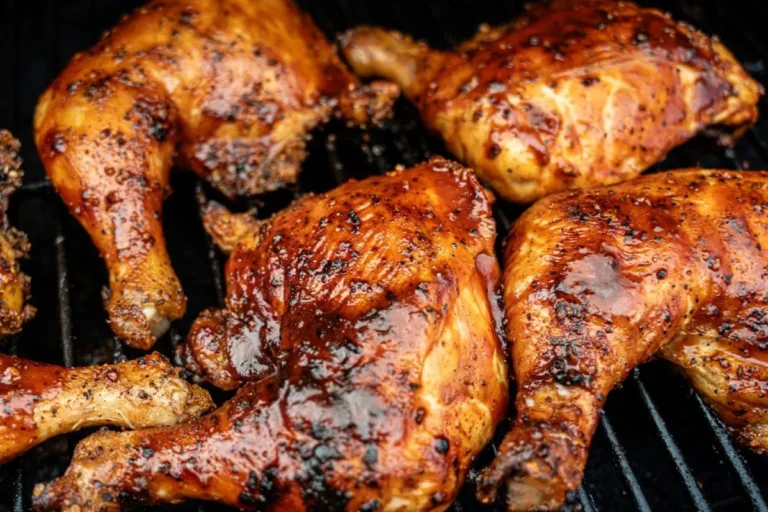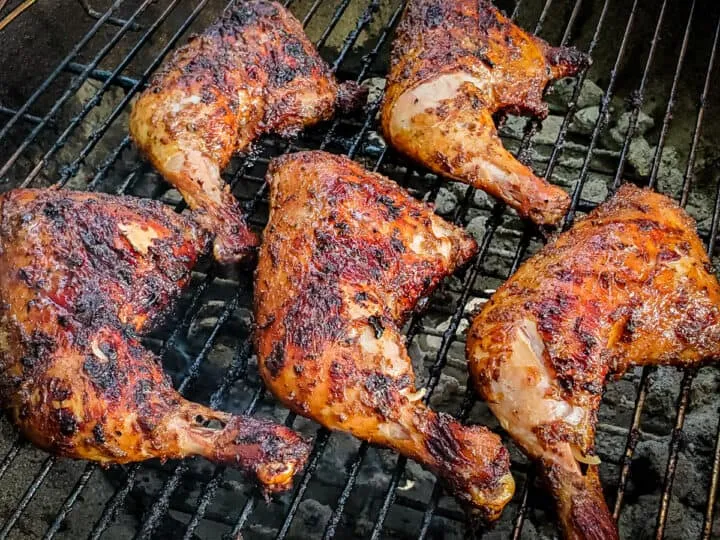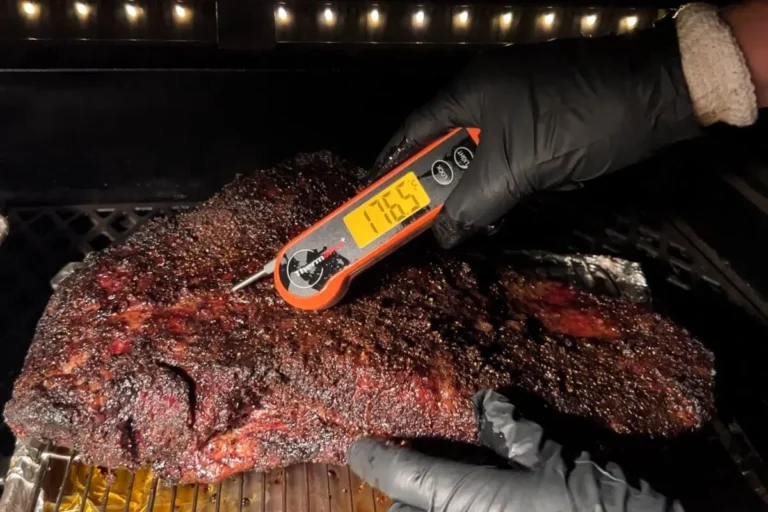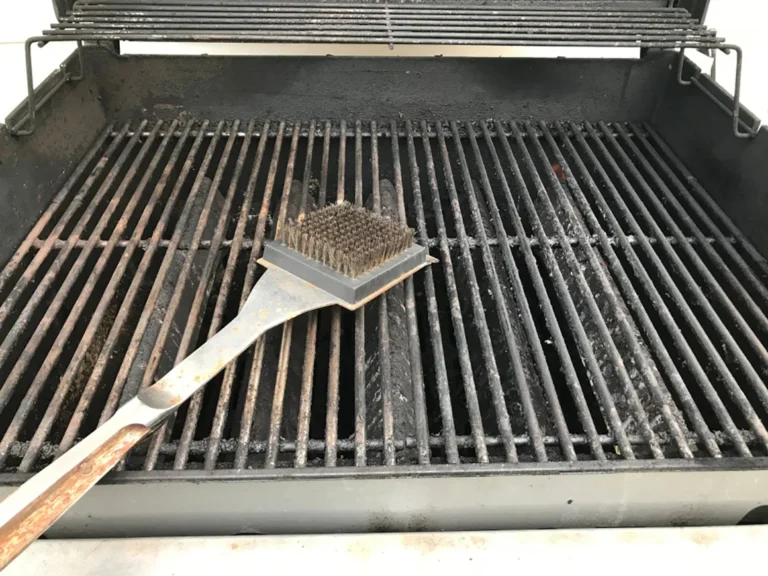How to Grill a Prime Rib Roast on the BBQ
Curious on how to cook a prime rib roast on the BBQ? I’ve got you covered! Cooking a prime rib roast on the grill is a fantastic way to merge the deep, succulent flavors of this top-tier cut with the irresistible smoky, charred notes that only grilling can deliver.
Whether you’re gearing up for a holiday celebration or just treating yourself on the weekend, grilling a prime rib roast adds a touch of outdoor excitement and unbeatable flavor.
This technique not only imparts a mouthwatering smoky scent but also keeps the meat tender and juicy inside, making it the star of any gathering. Let’s go over the steps to master the art of BBQ prime rib roast and guarantee a grilling win.
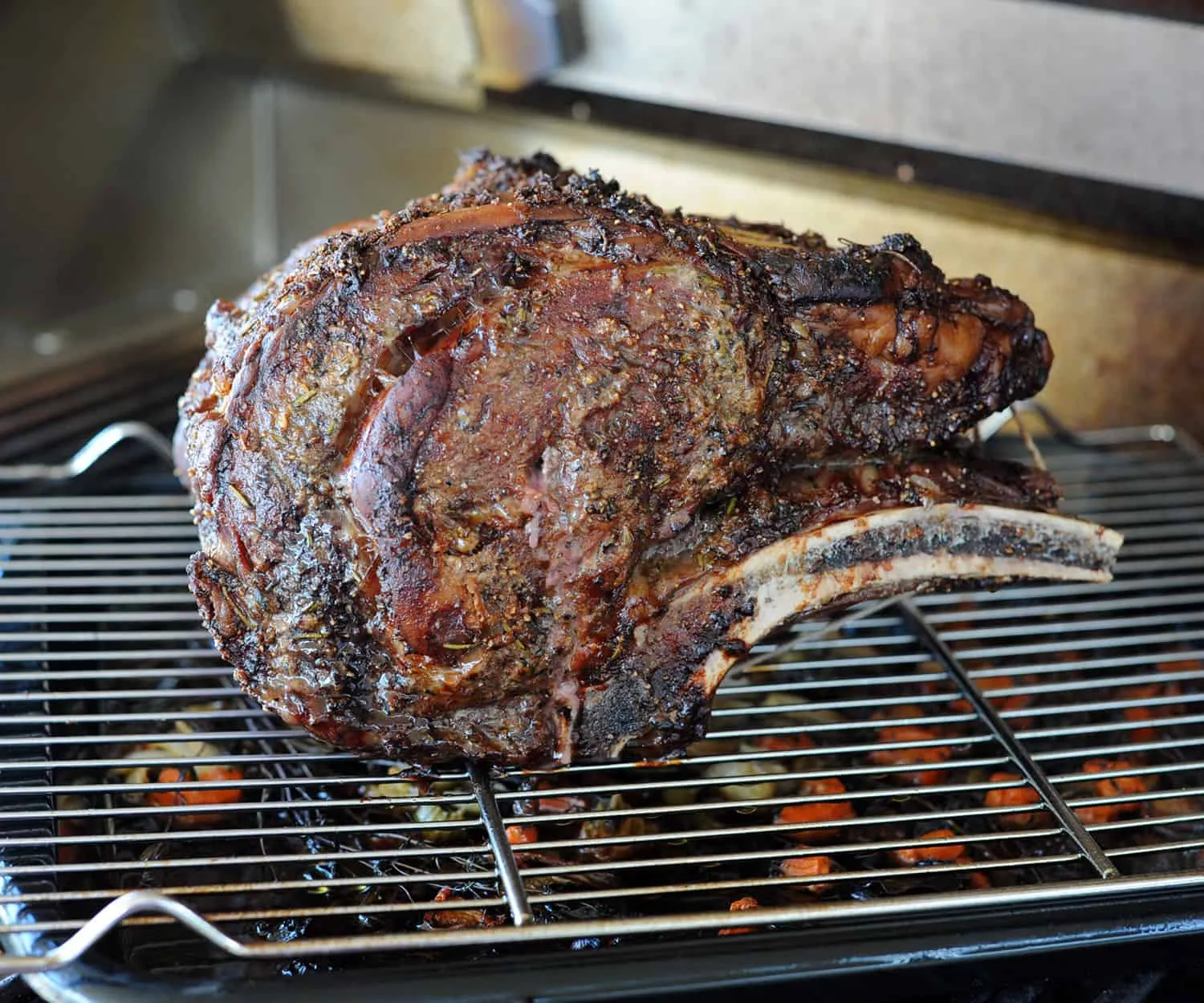
Why Grilled Prime Rib is an Excellent Option
- Boosted Flavor: The BBQ’s smoky essence pairs beautifully with the rich taste of prime rib.
- Moist and Tender: The high heat sears the outside, sealing in the juices for a moist and tender interior.
- Celebratory Vibe: Grilling offers an enjoyable and interactive cooking experience, perfect for get-togethers.
- Aromatic Atmosphere: The smell of grilling meat creates a festive ambiance, ideal for special occasions and backyard gatherings.
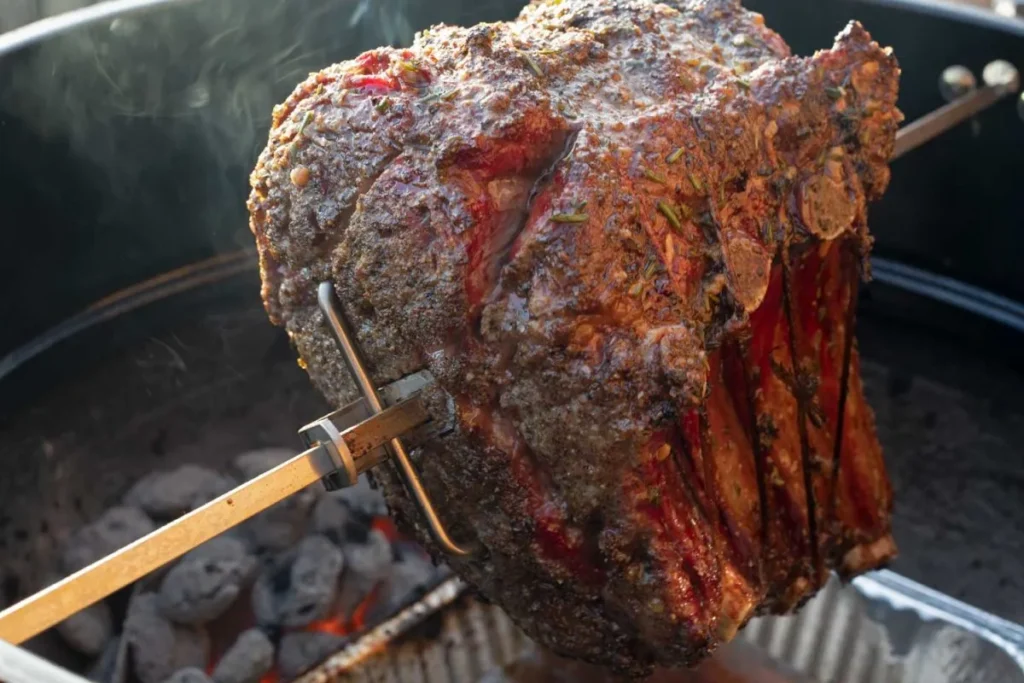
Picking the Perfect Prime Rib
Choosing the right prime rib for grilling is key to achieving a mouthwatering result. Here are some pointers to help you pick the best cut:
- Portion Size: Choose your prime rib based on your guest count. Typically, a bone-in prime rib serves about two people per rib, so a three-rib roast will feed six guests.
- Marbling: Seek out a roast with good marbling – those streaks of fat within the muscle. Marbling is essential for flavor and tenderness, as the fat melts during grilling and keeps the meat juicy.
- Quality Grade: Aim for USDA Prime if possible; it has the best marbling and overall quality. If Prime isn’t available, USDA Choice is a solid alternative.
- Bone-In vs. Boneless: Bone-in prime rib delivers more flavor and juiciness, while boneless is easier to manage and carve. Both are excellent choices based on your preference.
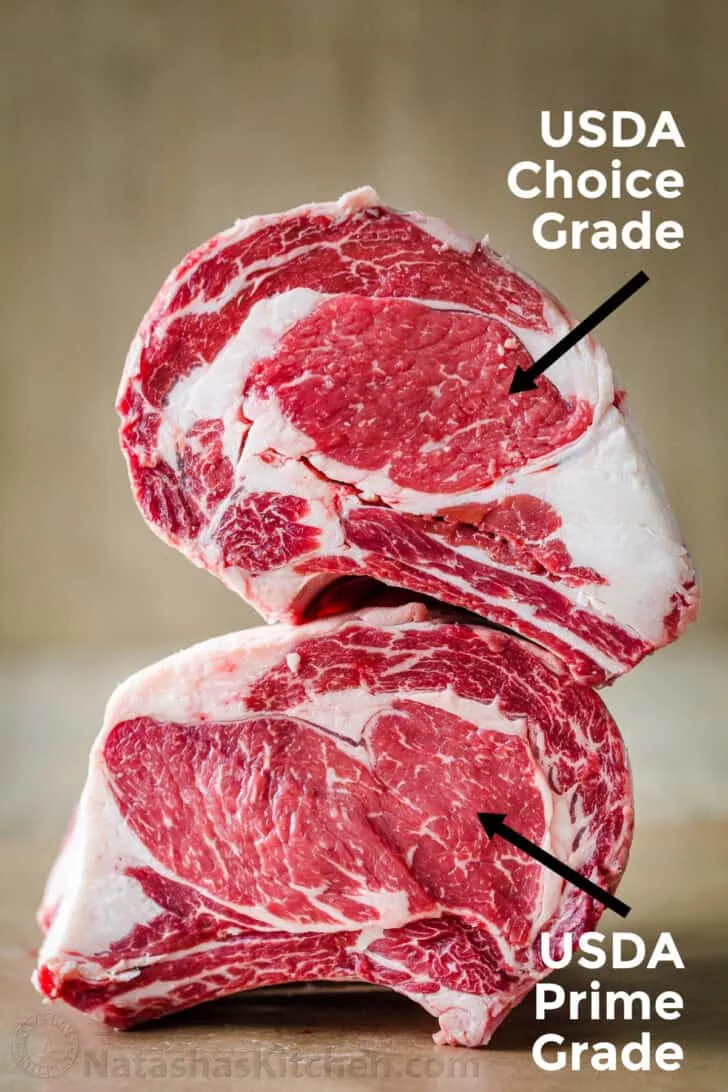
Preparing Your Prime Rib for Grilling
Removing the Silver Skin
Taking off the silver skin from your prime rib is crucial for better seasoning absorption and a tender texture. Here’s how to do it:
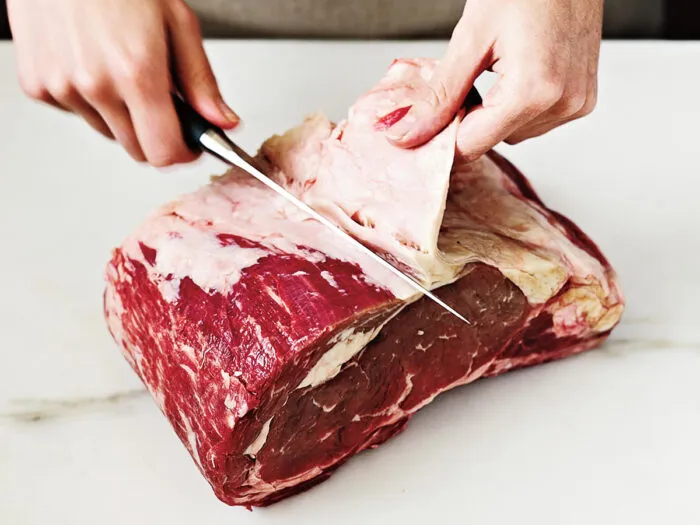
- Identify the Silver Skin: This is a thin, shiny membrane on the meat’s surface.
- Use a Sharp Knife: A boning or paring knife works best for precision.
- Create a Starting Point: Slide the knife’s tip under the silver skin at one end of the roast. Lift it slightly to create a gap.
- Cut Along the Surface: Angle the knife upwards and carefully slice along the silver skin’s length, keeping the blade close to avoid wasting meat.
- Pull and Cut: Gently pull the silver skin away from the meat with one hand while cutting with the other. Work slowly to remove all of the membrane without taking off too much meat.
Frenching the Bones
Frenching the bones gives your prime rib roast a sophisticated look. This technique trims the meat and fat from the rib ends for a cleaner presentation. Here’s how:

- Locate the Rib Bones: Find the rib bones at one end of the roast.
- Trim the Meat and Fat: Using a sharp knife, cut away the meat and fat covering the bones. Start at the base and work your way up.
- Scrape the Bones Clean: After removing the meat and fat, use the knife’s back to clean any remaining bits off the bones. This ensures they’re clean and white.
- Repeat: Do this for each rib bone until all are properly frenched.
The Secret Trim
Enhancing your prime rib with a special trimming technique can boost its flavor and cooking performance. Here’s a trick:

- Fat Cap Trimming: Reduce the fat cap to about 1/4 inch thick. While some fat is crucial for flavor and moisture, too much can cause flare-ups on the grill.
- Scoring the Fat Cap: Lightly score the fat cap with a crisscross pattern of shallow cuts. This helps the seasoning penetrate and renders the fat better during grilling.
- Removing Excess Fat Between Ribs: Trim thick layers of fat between the ribs. This promotes even cooking and prevents excessive greasiness.
Grilling Techniques for Prime Rib
Grilling a prime rib roast combines slow cooking with a high-heat sear to create a flavorful crust. Here’s a step-by-step guide to get it just right:
Preheat and Prepare the Grill
- Two-Zone Setup: Arrange your grill into two zones: one side for high heat (around 450°F or 232°C) for searing, and the other side for low heat (around 250°F or 121°C) for slow cooking.
- Preheat the Grill: Let your grill heat up for about 15-20 minutes before you start cooking.

Slow Cooking Phase
Slow cooking is key to ensuring your prime rib is tender and evenly cooked. Follow these steps:
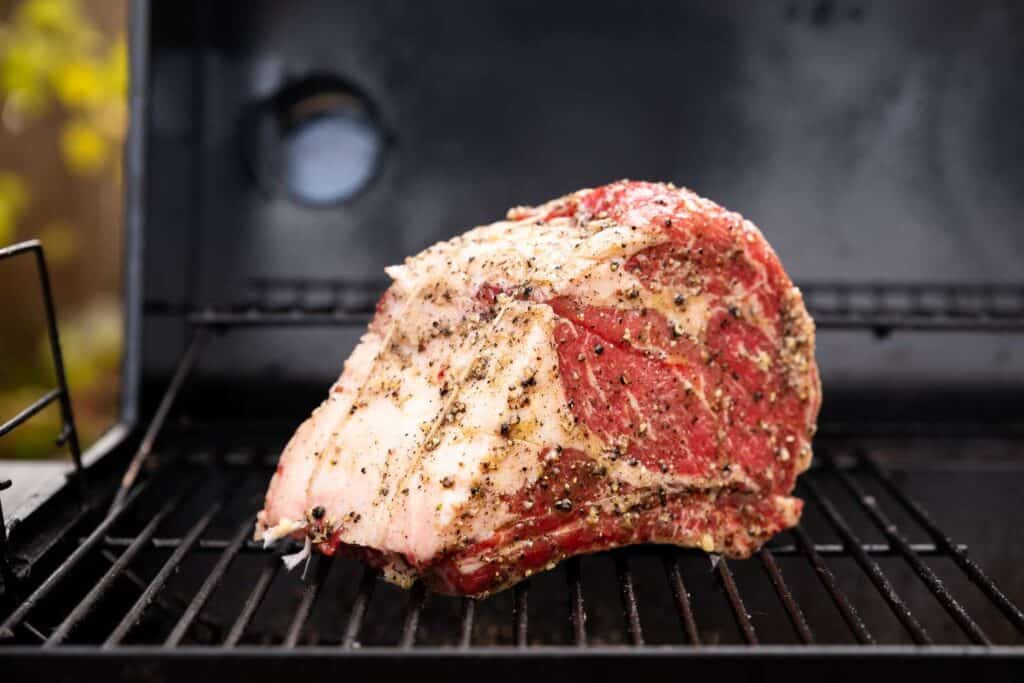
- Indirect Heat Configuration: Set up your grill with one side on low heat (about 250°F or 121°C) and the other side unlit or on low.
- Position the Roast: Place your prime rib on the cooler side of the grill, bone side down if it’s bone-in, or on a rack if it’s boneless.
- Temperature Monitoring: Insert a meat thermometer into the thickest part of the roast, making sure to avoid the bone.
- Slow Cooking: Close the grill lid and let the prime rib cook slowly. Keep the grill temperature steady and resist the urge to open the lid frequently.
- Target Internal Temperature: Cook until the internal temperature reaches about 110°F (43°C) for rare, 120°F (49°C) for medium-rare, or 130°F (54°C) for medium.
Creating the Crust
To get that perfect crust, you need high heat and a few precise steps:
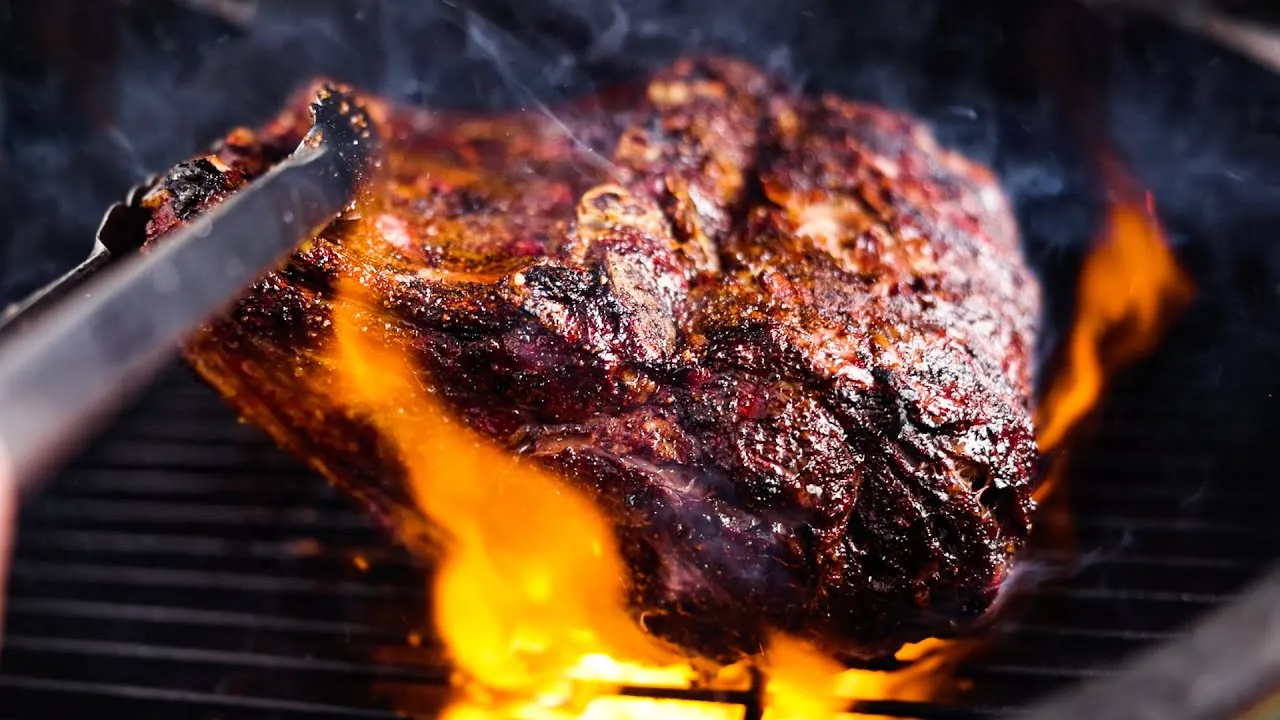
- Move to Direct Heat: Once the slow cooking phase is done, move the prime rib to the hot side of the grill (around 450°F or 232°C).
- Searing: Sear each side of the roast for about 2-3 minutes. You’re aiming for a deep, caramelized crust.
- Rotate for Even Crust: Turn the roast as needed to ensure all sides get a nice sear. Keep a close eye to avoid burning.
- Monitor Closely: Use tongs to handle the meat, avoiding piercing it to keep the juices intact.
Resting the Meat
Resting your prime rib after grilling is crucial for the best results. Here’s why and how to do it:

- Importance of Resting: Resting lets the juices redistribute throughout the meat, making it more tender and flavorful.
- Tent with Foil: Remove the roast from the grill and cover it loosely with aluminum foil. This helps retain heat without steaming the meat.
- Resting Time: Allow the prime rib to rest for 20-30 minutes. The internal temperature will rise by about 5-10 degrees during this time, reaching your desired doneness.
- Final Temperature Check: Ensure the final internal temperature is 120°F (49°C) for rare, 130°F (54°C) for medium-rare, or 140°F (60°C) for medium.
- Carving and Serving: Once rested, slice the prime rib against the grain into thick slices and serve immediately.
- Looking to tackle another impressive BBQ dish? Check out our tips on grilling a Tomahawk Steak for more culinary inspiration!
Different Grilling Methods
When it comes to grilling prime rib, several methods offer distinct benefits:
- Pellet Smokers: Provide precise temperature control and a deep, smoky flavor. Perfect for slow cooking and achieving consistent results.
- Gas Grills: Easy to use and control. Preheat to high for searing, then switch to low for slow cooking. For extra smokiness, add wood chips.
- Charcoal Grills: Offer an authentic smoky flavor and high heat. Set up for two-zone cooking with hot coals on one side for searing and an indirect side for slow cooking.
Pick the method that fits your preference and equipment for a mouthwatering prime rib.
Using a Pellet Smoker
Grilling prime rib with a pellet smoker ensures steady temperature control and a rich smoky flavor. Follow these steps:
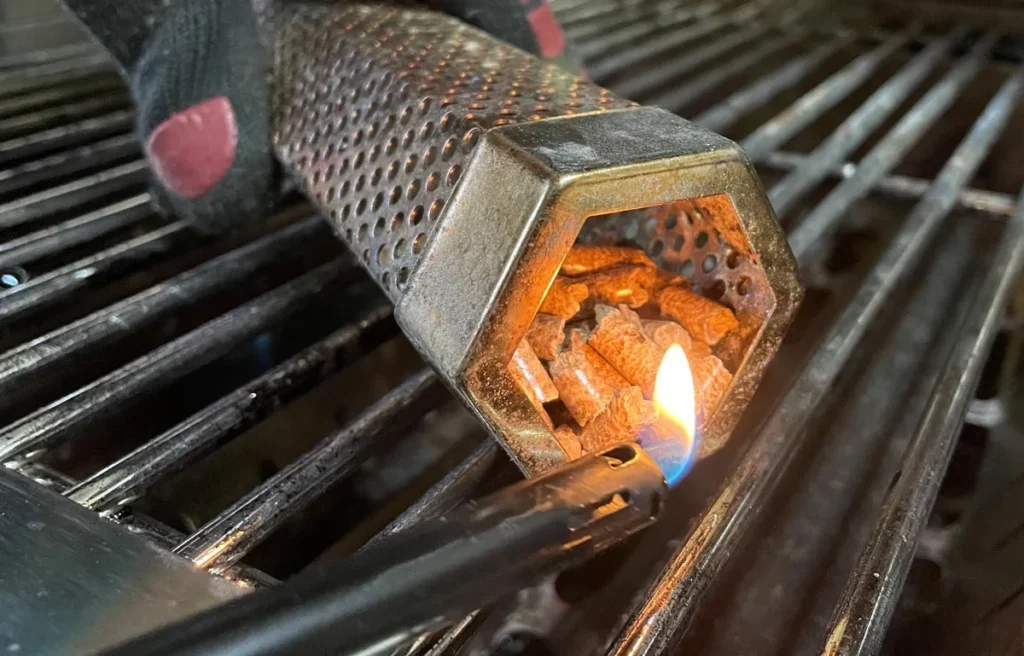
- Preheat the Smoker: Set your pellet smoker to 250°F (121°C).
- Wood Pellets: Opt for high-quality pellets like oak, hickory, or mesquite for a robust flavor.
- Position the Roast: Place the prime rib directly on the smoker grate, bone side down.
- Monitor Temperature: Use a meat thermometer and cook until the internal temperature reaches your preferred level (110°F for rare, 120°F for medium-rare).
- Crust Formation: Increase the smoker temperature to 450°F (232°C) during the last 15-20 minutes to develop a crust.
Grilling with Gas
Gas grilling offers ease and precision. Here’s how to do it:
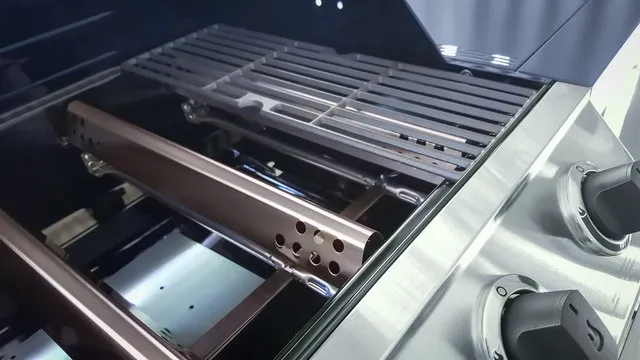
- Preheat the Grill: Set up for two-zone cooking: one side on high (450°F or 232°C) and the other on low (250°F or 121°C).
- Initial Slow Cooking: Place the prime rib on the cooler side, bone side down. Close the lid and cook until the internal temperature reaches 110°F (rare) or 120°F (medium-rare).
- Creating the Crust: Transfer the roast to the hot side of the grill. Sear each side for 2-3 minutes until a crust forms.
- Monitor and Adjust: Use a meat thermometer and adjust the heat as necessary to avoid flare-ups.
Charcoal Grilling
Charcoal grilling adds a traditional smoky flavor. Here’s how:
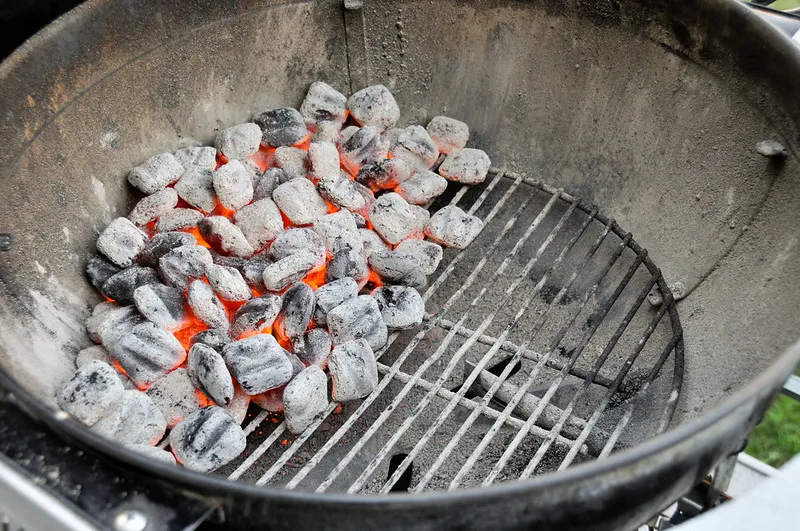
- Prepare the Grill: Set up a two-zone fire with hot coals on one side and no coals on the other.
- Slow Cooking: Place the prime rib on the cooler side, bone side down. Maintain a grill temperature of 250°F (121°C).
- Smoking Chips: Add soaked wood chips like hickory or oak to the coals for additional smokiness.
- Monitor and Rotate: Cook until the internal temperature reaches 110°F (rare) or 120°F (medium-rare), rotating the roast occasionally for even cooking.
- Crust Formation: Move the roast over the hot coals and sear each side for 2-3 minutes until a crust forms.
- Looking for more BBQ tips? Check out our guide on How Long Does It Take to BBQ Lamb Chops Perfectly for detailed cooking times and advice.
Serving and Pairing Ideas
Grilled prime rib is a real centerpiece, and it’s worth pairing it with equally standout sides and drinks. Here are some ideas to elevate your meal:
Side Dishes

- Garlic Mashed Potatoes: Rich and creamy, these potatoes are perfect for soaking up those delicious prime rib juices.
- Roasted Vegetables: A colorful mix of carrots, Brussels sprouts, and parsnips adds a vibrant contrast and complements the hearty meat.
- Yorkshire Pudding: This classic side is great for sopping up the savory juices.
- Caesar Salad: Fresh and crisp, this salad provides a nice counterbalance to the richness of the prime rib.
Drinks
- Red Wine: A bold Cabernet Sauvignon or Merlot pairs beautifully with the deep flavors of the meat.
- Craft Beer: A dark stout or rich porter matches the smokiness of the grilled prime rib.
- Classic Cocktails: An Old Fashioned or Manhattan adds a touch of sophistication to your meal.

Storing Leftovers
To keep your leftover prime rib tasty and fresh, follow these storage and reheating tips:
- Cool Quickly: Let the prime rib cool to room temperature within two hours of cooking to prevent bacterial growth.
- Wrap Tightly: Wrap the meat securely in aluminum foil or plastic wrap to protect it from air and moisture loss.
- Use Airtight Containers: Place the wrapped meat in an airtight container for added protection.
- Refrigerate Promptly: Store in the refrigerator at or below 40°F (4°C) if you plan to eat it within 3-4 days.
- Freeze for Longer Storage: For storage beyond a few days, freeze the wrapped prime rib. It stays good in the freezer for up to 3 months. Be sure to label the package with the date.
Reheating Leftovers
To reheat your prime rib while maintaining its tenderness:
- Slow and Gentle: Reheat the meat slowly to preserve its juicy texture. Preheat your oven to 250°F (121°C).
- Wrap in Foil: Place the prime rib in an oven-safe dish, add a splash of beef broth or water to keep it moist, and cover it with foil.
- Reheat Gradually: Warm it in the oven for about 20-30 minutes, or until the internal temperature reaches 135°F (57°C).
Common Grilling Mistakes and How to Avoid Them
- 1. Not Preheating the Grill
- Mistake: Skipping the preheating step can lead to uneven cooking and poor searing.
- Solution: Always preheat your grill for at least 15-20 minutes. Set one side to high heat for searing and the other to low for slow cooking to get the best results.
- 2. Overcooking
- Mistake: Cooking the prime rib too long makes it dry and tough.
- Solution: Use a meat thermometer to keep track of internal temperatures. Pull the roast from the grill when it hits 110°F (43°C) for rare, 120°F (49°C) for medium-rare, or 130°F (54°C) for medium.
- 3. Underseasoning
- Mistake: Insufficient seasoning leads to bland meat.
- Solution: Generously season your prime rib with kosher salt, freshly ground black pepper, and any rub you like. Let it sit at room temperature for an hour before grilling to let the flavors penetrate the meat.
- 4. Skipping the Resting Period
- Mistake: Carving right after grilling causes the juices to run out, making the meat dry.
- Solution: Tent the prime rib with foil and let it rest for 20-30 minutes. This helps the juices redistribute, making the roast juicy and flavorful.
- Mistake: Carving right after grilling causes the juices to run out, making the meat dry.
- 5. Using Direct Heat Only
- Mistake: Cooking only over direct heat can burn the outside while leaving the inside undercooked.
- Solution: Employ a two-zone cooking method. Start with indirect heat for even cooking, then switch to direct heat to develop a crispy crust.
- 6. Neglecting to Rotate
- Mistake: Failing to rotate the roast can result in uneven cooking.
- Solution: Rotate the prime rib occasionally during the slow cooking phase to ensure even heat distribution.
FAQs
Disclosure: Our blog contains affiliate links to products. We may receive a commission for purchases made through these links. However, this does not impact our reviews and comparisons. We try our best to keep things fair and balanced, in order to help you make the best choice for you.


